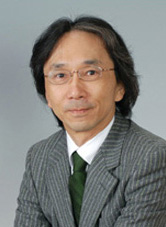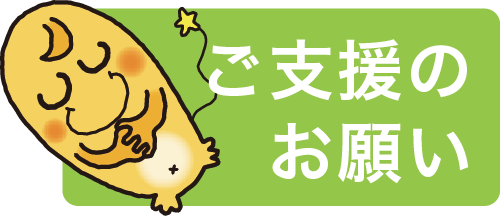[include-page id=”27802″]
Keynote Symposium «Abstract»
-Turning the Great Hanshin-Awaji Earthquake
into Brighter Futures for People and Fellow Animals -
What kind of everyday life should we protect?
Date: Sun. 19th July 10:30~13:30
Venue: Convention Hall
Purpose: 20 years have passed since the devastating Great Hanshin-Awaji Earthquake. We have all learned the value and significance of being able to get through “a normal everyday life”. But what is “a normal everyday life?” Society now faces the numerous challenges caused by aging, people remaining single, the birth rate falling, globalization, and so on. Although information and social connections have become diversified, more efficient, and speedier due to IT advancement, the reality is more people feel lonely and isolated from society and are too stressed out. Don’t we feel the need to find a way out of this and discover what we really need to spend our normal everyday lives on? Now is the time to think about and extensively discuss what our way of living should look like considering we humans are also animals and a part of nature. We wish to lay down a foundation for the happy future of all humans and other animals in this 20th year from the earthquake. That is our contribution to – a nd our hope for – this 20th year since the Great Hanshin-Awaji Earthquake.
<Chairperson’s Message>
 Chair: Ryuichi IDA (Professor emeritous, Kyoto University/Distiguished Visiting Professor, Graduate School of Global Studies, Doshisha University/Director, Research Centre for Bioethics Governance, Doshisha University/Vice Director, International Institute for Advanced Studies (public corp.))
Chair: Ryuichi IDA (Professor emeritous, Kyoto University/Distiguished Visiting Professor, Graduate School of Global Studies, Doshisha University/Director, Research Centre for Bioethics Governance, Doshisha University/Vice Director, International Institute for Advanced Studies (public corp.))
20 years have already passed since the Great Hanshin-Awaji Earthquake. On that day, we all recognized once again the greatness and the power of the Nature, as well as the dignity of the life of all living beings. Recovery and reconstruction from the disaster has been a process of reaffirming our family’s bond and of engraving in our heart and mind the importance of gentle consideration for and heartfelt communication with others. “Others” are not solely human beings. We, all human beings, are embraced in the Nature, and are living closely together with various living beings. Each of our dear cats and dogs, cows and pigs, and flowers and plants has also its life in the Nature. Thus, a new vision of “Family” is now born, based on the tripod of human, animals and the Nature.
This 20th year marks also the 70th year since the end of the last World War. Our life is now full of richness in products and of convenience in life style. However, we feel somewhat unsatisfied. Earth warming, modern ICT society collecting and utilizing plenty of personal information, imbalanced generation structure through ageing and birth-rate declining… How far away we are from the Nature! We have a firm will to build up an inclusive society of human beings, animals and plants, but never a kingdom dominated by humans. Let’s take a new look at ourselves, at our neighbour animals and plants and our environment.
In the Keynote Symposium, three eminent personalities will give insightful talks on the public nature of the relationship of humans, animals and the Nature, on the family love viewed from neuro-science as well as on the flexibility of life. Those who were born in the year of the Great Earthquake celebrate their 20thanniversary this year. Twenty years’ experience leads us to reconsider the relationship among ourselves and that of humans, animals and the Nature. A precious chance is with us to talk with every living being surrounding us, and to make a “family circle” with animals, flowers, insects and others. Such a “Family Circle” is the witness of our twenty years’ efforts of recovery and revival. In short, that is our Dear Daily Life.
A Quest for a New Form of “Public” among Human Beings, Animals, and Nature
 Katsuhiro KOHARA, Th.D. (Professor of Systematic Theology, School of Theology, Doshisha University /Director of the Center for Study of Conscience)
Katsuhiro KOHARA, Th.D. (Professor of Systematic Theology, School of Theology, Doshisha University /Director of the Center for Study of Conscience)
Have human beings lived together in a harmonious way? In reality, various kinds of discrimination and the structure of control and subjugation remain as a serious problem to our society. However, it has been consistently anthropocentric regardless of discrimination within its own structure. In other words, animals and nature have been relegated to the outside of the public sphere dominated by humans in which their values have been measured by how much they contribute to the human benefits.
In the past centuries a lot of new ideas and actions have emerged against this long standing structure of values. One is Albert Schweitzer’s ethics of reverence for life in which he criticized the anthropocentrism that he considered the root cause of the wars. Another is the criticism of speciesism advocated by Peter Singer who maintains that giving less consideration to the interests of nonhuman animals, merely because they are not members of our species, cannot be ethically justified. This kind of idea has given birth to the various sorts of animal liberation movements.
We can find these radical challenges to the conventional anthropocentric ideas in the West. At the same time, we should keep in mind that Japan has accumulated its own unique idea of animals and nature in cultural and religious traditions that often stress the mutual connectedness and continuity of humans, animals, and nature instead of the absolute superiority of humans over other creatures. To put it simply, animals and nature were an integral part of the public sphere for many centuries. This inheritance, however, was more or less damaged and lost in the rapid modernization of Japan. Anyway, it would be a fruitless discussion in this globalized age to argue which between the Western and Japanese cultures is superior to the other.
The modern concept of “public” undoubtedly presupposes maximizing the benefits of humans in the current generation. However, we need to rediscover and reconsider the idea of “the public” in such a way it is neither too anthropocentric nor too present-generation-oriented if we are to pave a realistic way of preserving the environment and bio-diversity in a sustainable manner. It is surely an inter-civilizational challenge to quest for a new form of “public” between human beings, animals, and nature.
“Neural correlates of family love”
 Kazuyuki SHINOHARA, M.D., Ph.D. (Professor, Department of Neurobiology & Behavior, Nagas
Kazuyuki SHINOHARA, M.D., Ph.D. (Professor, Department of Neurobiology & Behavior, Nagas
aki University Graduate School of Biomedical Sciences)
In human beings, “love” is said to be the greatest reward in the world. “love” is positive affect in attachment, better characterized by warmth, joy, tender intimacy and selflessness. This attachment-related pleasant affects ensure the formation of firm bonds between individuals, by making this behavior a rewarding experience.
Currently, although neural basis of various emotions in humans is becoming evident, neural basis of “love” have not been clarified in the category of family “love”. Members of the “family” are generally considered to be grandparents, parents, and child. Biological significance of family, unequivocally is to grow up a child to obtain the “attachment behavior” that allows the “appropriate partner selection”, in order to create a further next generation. The “attachment behavior” of the child may be formed by parental behavior of parents and grandparents. Thus, parents and grandparents need to be motivated to behave parentally by “love”. What are neural bases of maternal and paternal love, and grandmother’s love?
In addition, strong motivation that child formed the “attachment behavior”, would be feelings of “love” for the parents. A child is dependent on parents before the puberty whereas a child becomes rebellious when a child reaches puberty, which makes them be independent from parents and close to the same generation. How are neural basses of “love” developed before, during and after puberty?
Therefore, in this seminar, I’ll talk about neuronal and genetic bases of the family “love”, especially maternal “love”, paternal “love”, grandmother’s “love”, and developmental changes in boy’s love for a mother before and after the puberty.
“Learning from the ever-changing flexibility of life”
 Motoko MORIMOTO (Professor, Miyagi Univerisity School of Food, Agricultural and Environmental Sciences, Department of Farm Management/ a member of Japan Veterinary Medical Association, Committee on Animal Welfare/Vice President of Miyagi Prefecture Animal Welfare Council/DVM, PhD)
Motoko MORIMOTO (Professor, Miyagi Univerisity School of Food, Agricultural and Environmental Sciences, Department of Farm Management/ a member of Japan Veterinary Medical Association, Committee on Animal Welfare/Vice President of Miyagi Prefecture Animal Welfare Council/DVM, PhD)
All animals including humans are composed of cells. Each cell unceasingly carries on multiple tasks in an amazingly precise manner. Unlike machines, however, cells have an extremely delicate constitution. The continuation of life in organisms is premised on making mistakes. Yet they possess a mechanism to overcome and survive these mistakes. This is why organisms can restore their functions even after receiving damage. Life is resilient in this way. Living organisms are even prepared to deal with totally unpredictable changes and damages. At the individual level, the appearance of a human being will change very little from one day to the next. Yet, the cells are constantly being replaced, and we are renewed daily. Our cells and tissues are restored to overcome errors and damage, and the individual organism grows. In some cases, growth is even encouraged by external pressures forcing change upon organisms. We have no option to begin with of denying change and staying in the same spot. This is because the cells that make up the individual are daily being replaced. Environmental changes in northern Honshu of Japan in the aftermath of the 2011 earthquake and tsunami raised concerns about agricultural production and as a living environment for animals. However, it provided the opportunity for people to think about how to preserve their livelihoods against such changes and to act on it. There were encounters that would not have taken place had it not been for the earthquake/tsunami disaster and nuclear plant accident, and new networks sprang up. As I noted at the outset, life is premised on change. The paths are varied. Living organisms are equipped with ways to resort to alternative channels when an original channel has been destroyed. They are endowed with mechanisms to overcome a single failure and preserve life through layers of channels. If something should happen, previously unused channels become activated. It would do well to remind ourselves that we are all members of this wonderful family of living organisms. I believe that, by learning from life’s flexibility and exploring its capabilities in greater depth, many more of us will be able to lead our lives with a renewed sense of hope.

